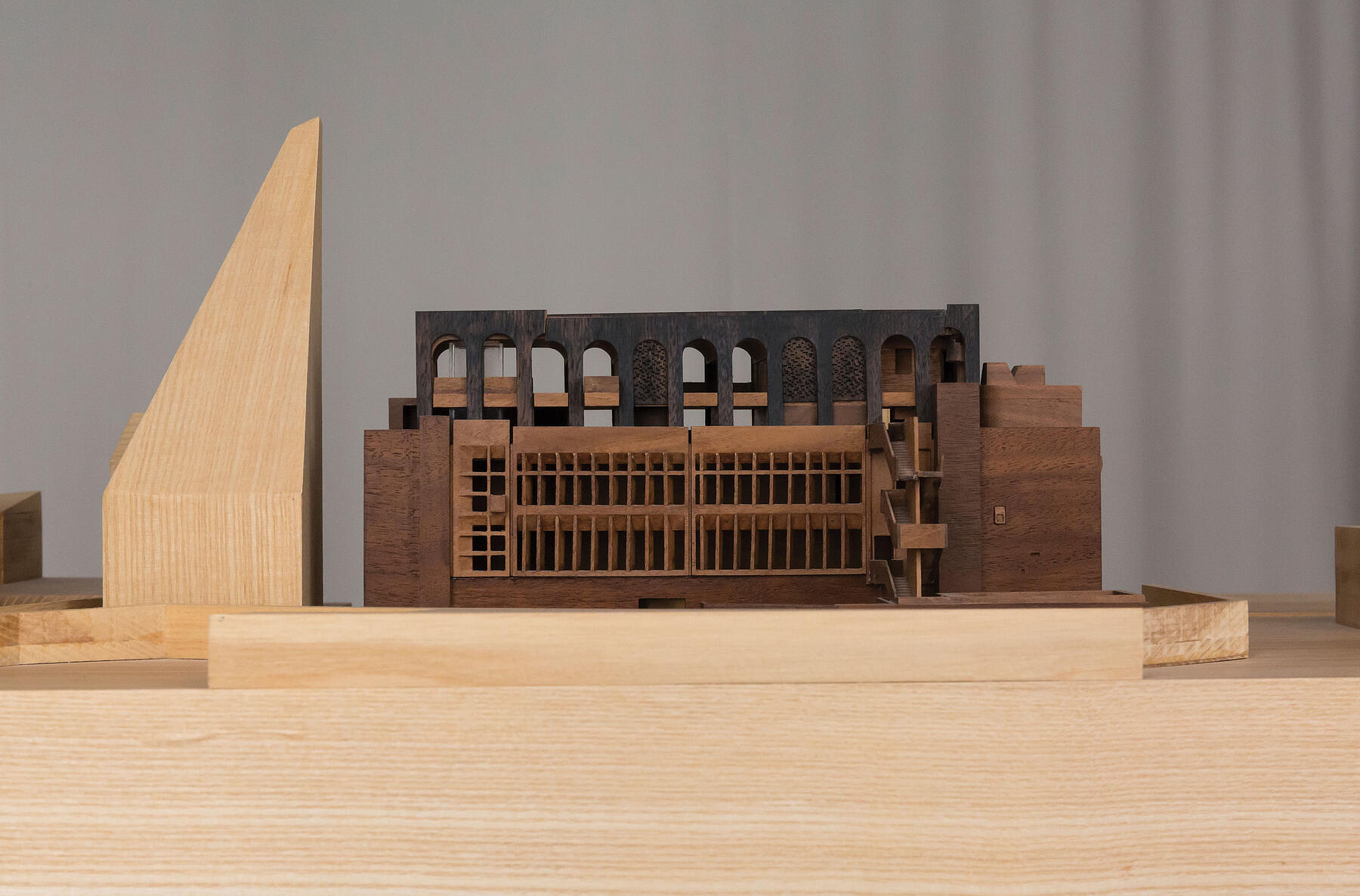谜 | 科隆总部大楼
Ehrenfeld, a former industrial district in Cologne, now boasts a bustling multicultural art scene. As a pivotal presence in the local creative industry with a vision to showcase a cross-disciplinary approach to design, our client decides to build a new office building next to their old one. The design has eventually evolved into an assemblage of elements that organically take place within and around a monolithic concrete block, a presence whose inexplicable character reflects that of its environment and formation.
The only access to the building from the street is through a restaurant on the ground floor, while the main entrance to the office – which takes up much of the block’s volume – is hidden from sight. The restaurant’s vestibule opens up to a vertical void, revealing the meeting rooms and a library where visitors can catch a glimpse of the dramatic section upon entry. Another side of the block opens up to a courtyard via a series of operable screens which span the length of the building, allowing programs to spill out to the surrounding. As one enters, the architectural object dramatically shifts to a progression of open, connected spaces – spaces that are seemingly ‘unfinished’ and ‘useless’ yet invite spontaneous occupation and usage. The triple-height foyer is capped with a skylight and merges with a gallery, a photo studio and a restaurant at the opposite end.
The upper two floors house flexible open-plan office spaces. A main staircase serves as a promenade running parallel to the street, occupying the full height of the building and opening up via skylight. Programs inserted around the stairs lead to unexpected encounters where occupants of various floors can intermix. A residential loft perche on top of the office building – a light structure of arches that provides living space for the client’s family. The main space occupies the lower level while an upper gallery is inserted as a place for work, rest and storage. In contrast to the heavier concrete mass of the office building, the loft’s arches are fabricated from lighter concrete members, framing a space of air and sunlight.
One observes an interplay of solid and void as the building’s enigmatic presence unfolds. The alchemy through which the disparate elements of this project – heavy walls, exterior appendage and interior vacuum – are bound together shows an act of space-studying with both tectonic and stereotomic methods. Curiosity is only heightened when a person enters a seemingly impenetrable object.
